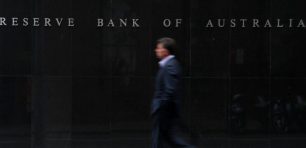
Reserve Bank governor Phillip Lowe. Source: AAP/Joel Carrett.
Reserve Bank governor Philip Lowe has this week reinforced the bank’s expectation that inflation will peak at about 8% by the end of 2022 and hover above 3% in two years.
Lowe told an audience at the Committee for the Economic Development of Australia annual dinner that there was a range of factors behind the decline in interest rates that is forecast to arrive by the end of 2024.
“The first is that the COVID-19 disruptions to supply are being resolved: delivery times and shipping costs have declined and the pressure on goods prices is abating,” Lowe said.
“The second is that commodity prices have stabilised and, in many cases, have declined to be back around their levels at the beginning of the year; in time, the effect of this will be evident in consumer prices.
“And third, the increase in interest rates here and around the world will result in slower growth in aggregate demand. In time, this means less pressure on capacity and lower inflation.”
Lowe does, however, remind the audience that outlooks are uncertain.
“We can’t rule out further bad news abroad that throws us off this path. And domestically, we need to avoid a price-wage spiral,” Lowe said.
“To date, while wages growth in parts of the private sector has picked up materially, aggregate wage outcomes in Australia have been consistent with a return of inflation to target.”
The Reserve bank chief observed that other advanced economies are seeing wages grow more quickly and that “this is an area we are watching carefully”.
Buried further in Lowe’s speech is an explanation of how the RBA intends to communicate conditions that would lead to rate increases. This follows bank statements being “widely reported” as a guarantee that interest rates would not increase until 2024.
A review had been done of the way in which the bank provided forward guidance on the cash rate in the midst of the pandemic with the bank flagging a change.
“The message about the expected timing of the first increase in interest rates dominated the message about the conditions under which rates would be increased. Indeed, our statements were widely reported as a commitment that the Board would not raise rates until 2024,” Lowe said.
“This meant that when we did lift interest rates in May this year, many people saw us as going back on this commitment and this has hurt our reputation. We are committed to learning from this experience.”
What will they be doing now after their fingers got burnt?
“Following the first increase in the cash rate, the board has returned to the approach to forward guidance that it used prior to the pandemic,” Lowe explained.
“That approach is qualitative in nature with any forward guidance focused on the short term. We value the flexibility in that approach and, in future, will avoid communication that focuses on the calendar or is too specific.”
This article was first published by The Mandarin.
Handpicked for you

Unemployment is still falling and inflation is still a problem. Will the RBA continue to hike interest rates?



COMMENTS
SmartCompany is committed to hosting lively discussions. Help us keep the conversation useful, interesting and welcoming. We aim to publish comments quickly in the interest of promoting robust conversation, but we’re a small team and we deploy filters to protect against legal risk. Occasionally your comment may be held up while it is being reviewed, but we’re working as fast as we can to keep the conversation rolling.
The SmartCompany comment section is members-only content. Please subscribe to leave a comment.
The SmartCompany comment section is members-only content. Please login to leave a comment.